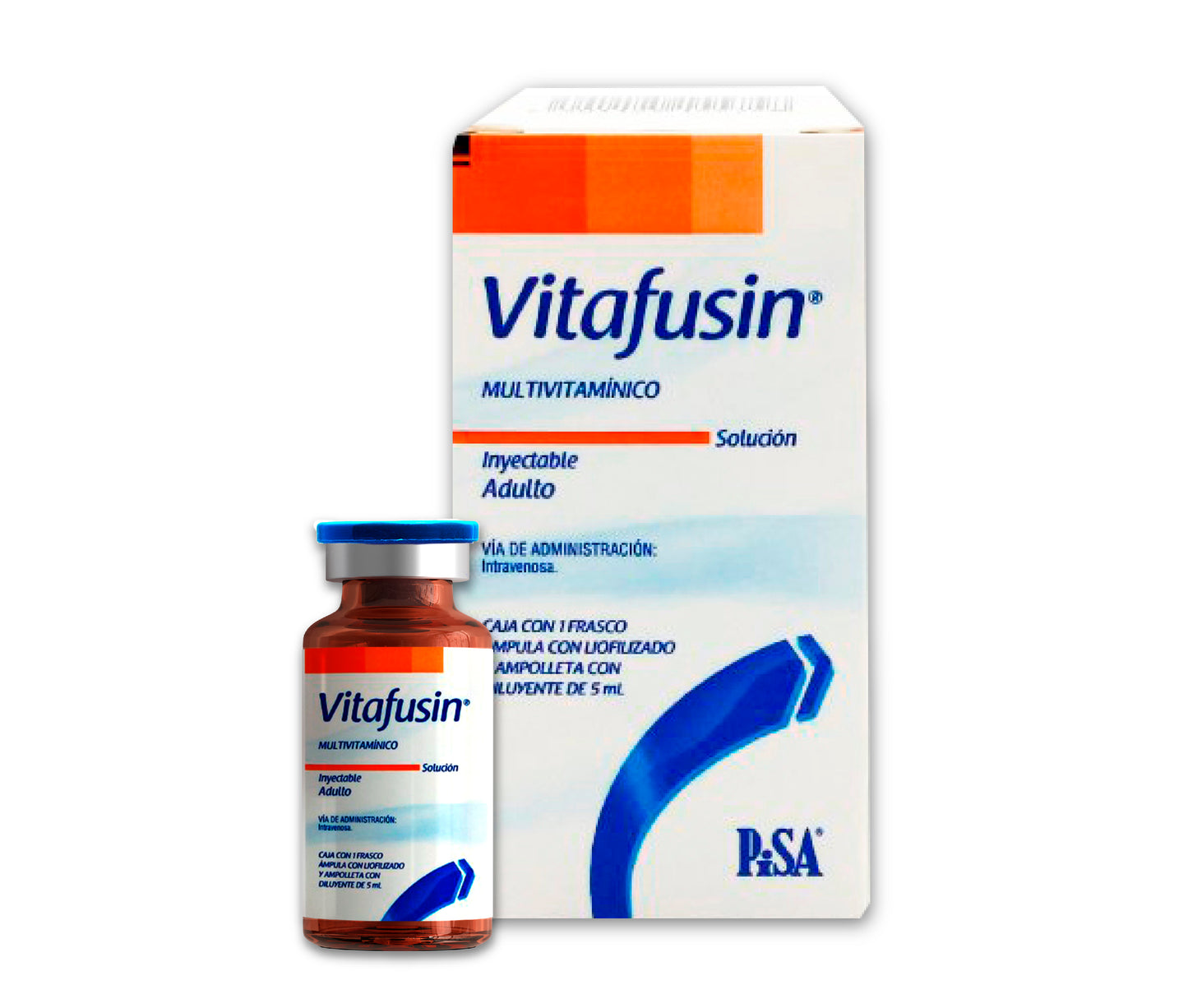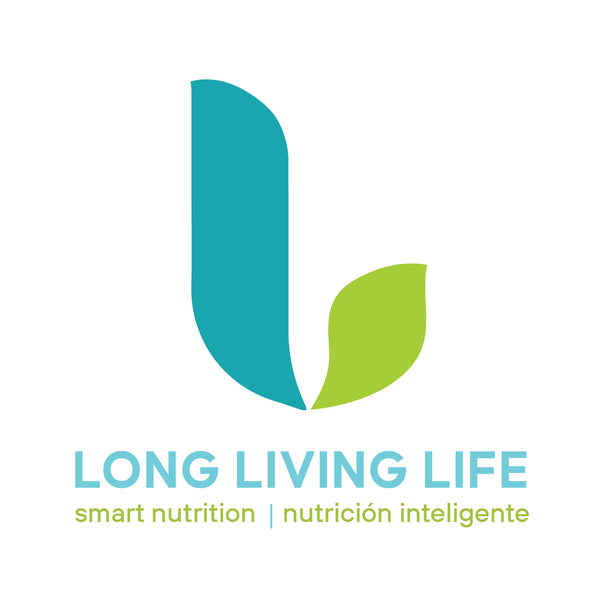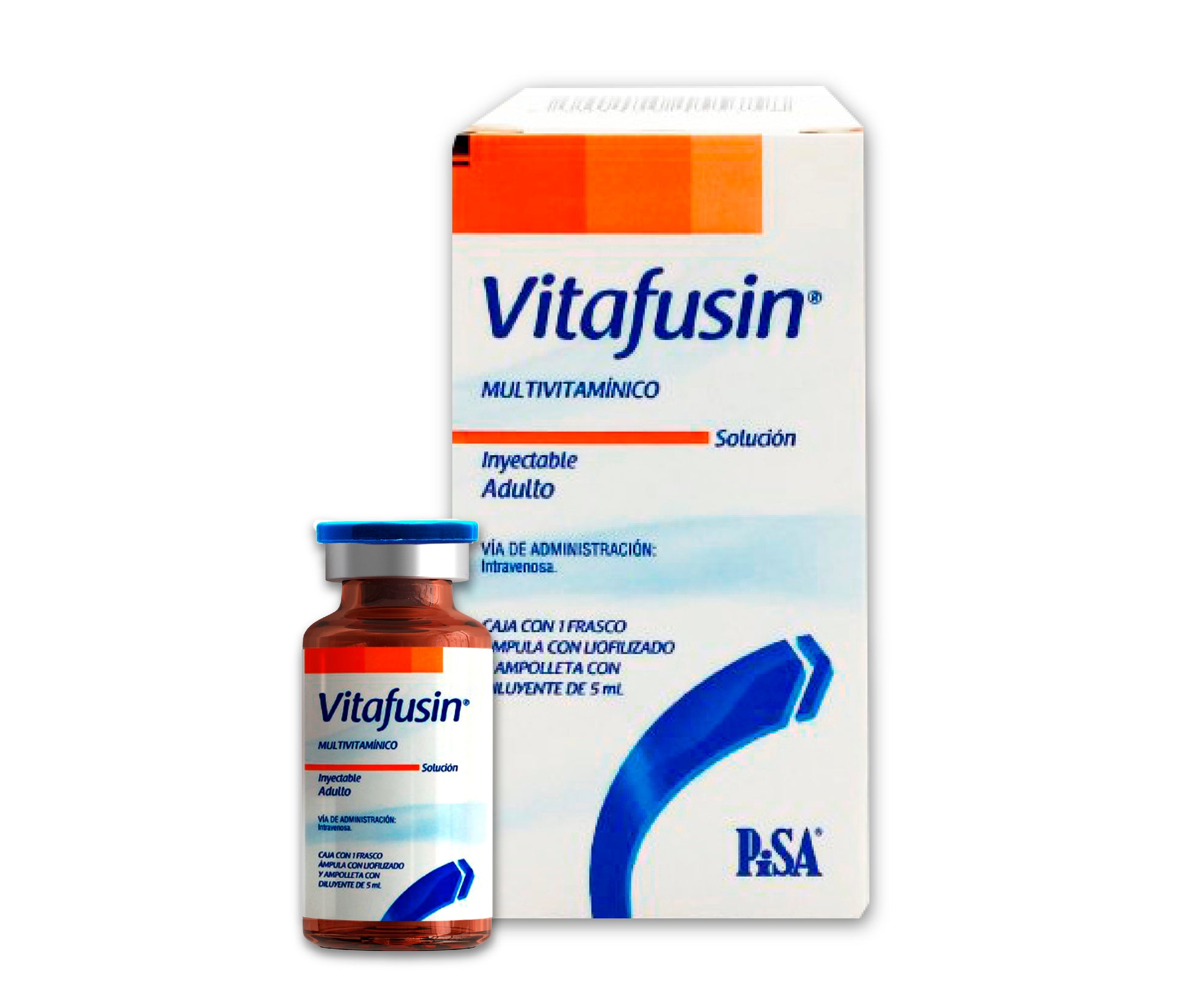My Store
Multivitamins Intravenous MORE THAN 12 VITAMINS AND MINERALS IN ONE VIAL
Multivitamins Intravenous MORE THAN 12 VITAMINS AND MINERALS IN ONE VIAL
Couldn't load pickup availability
PHARMACEUTICAL FORM AND FORMULATION:
Box with 1 vial with lyophilized powder and 1 vial with diluent 5mL
Vitamins and minerals in formula:
Retinol (Vitamin A Palmitate) 3300.0 IU.
Cholecalciferol (vitamin D3) 200.0 IU.
Alpha Tocopherol Acetate (Vitamin E) 10.0 IU.
Nicotinamide 40.0mg.
Riboflavin (Vitamin B2) 3.6 mg.
Pyridoxine (Vitamin B6) 4.0 mg.
Pantothenic Acid 15.0 mg.
Thiamine (Vitamin B1) 3.0 mg.
Ascorbic acid (Vitamin C) 100.0 mg.
Biotin 0.06mg.
Cyanocobalamin (Vitamin B12) 0.005 mg.
Folic acid 0.400 mg.
The ampoule with diluent contains: Water for injection 5 mL.
THERAPEUTIC INDICATIONS:
VITAFUSIN® is indicated in adults and children over 11 years of age.
VITAFUSIN® is a multivitamin formula containing a combination of the most important fat-soluble and water-soluble vitamins. They are indicated to meet the vitamin needs during parenteral nutrition, and in those patients with severe nutritional deficiencies.
ADMINISTRATION
Using sterile water and a sterile syringe, introduce the diluent into the vial. Shake it and it is ready for dilution. VITAFUSIN® is applied by adding it to intravenous solutions.
Adults and children over 11 years of age: For parenteral feeding, use a vial of VITAFUSIN® diluted in no less than 500 mL of intravenous glucose or saline solutions. Two or more bottles daily may be used, depending on the clinical status or degree of multivitamin deficiencies.
PHARMACOKINETICS AND PHARMACODYNAMICS
Vitamins are essential elements in the metabolism of carbohydrates, proteins and lipids, by acting as coenzymes.
Vitamin A: Involved in bone development, vision and epithelial integrity, lysosomal stability, glycoprotein synthesis, cell differentiation and embryonic development. It is involved in the immune response, taste, hearing, appetite and growth. Vitamin A is widely distributed in the body and accumulates mainly in the liver, skin, and adipose tissue. It is gradually released from the deposits bound to a specific alpha globulin. Retinol is conjugated with glucuronic acid and excreted in the urine and feces.
Vitamin D: Acts as a regulator of calcium metabolism and other minerals. It plays a multiple role in the hematopoietic system and exerts effects on cell differentiation and proliferation. The hydroxylated metabolites of cholecalciferol circulate in the bloodstream bound to an alpha globulin. It is stored in fat and muscle. Cholecalciferol is converted in the liver into 25-hydroxy derivatives by the enzyme Vitamin D 25-hydroxylase; These metabolites are subsequently hydroxylated in the kidney by Vitamin D 1-hydroxylase, forming the active metabolite 1,25-hydroxycholecalciferol (calcitriol).
Vitamin E: It is considered a free radical scavenger. It acts as an antioxidant, protecting polyunsaturated fatty acids from oxidation. It protects cell membranes and plays an important role in immune function. Participates in the synthesis of the heme group of hemoglobin. It is distributed in all tissues, including inside the eye, mainly in the retina and is stored in adipose tissue. It is metabolized in the liver and eliminated through the bile.
Nicotinamide: Participates in the reactions that generate energy thanks to the biochemical oxidation of carbohydrates, fats and proteins. It participates in the synthesis of some hormones, in the synthesis of fats and in cellular respiration. After administration, it is widely distributed in body tissues and in breast milk. It is metabolized in the liver and excreted through the urine.
Riboflavin: It acts as a coenzyme of several enzymes of intermediate metabolism. It catalyzes redox reactions. It is essential in the metabolism of proteins, carbohydrates, fats and energy production. In the body, riboflavin is converted to flavin mononucleotide (FMN), which is converted to flavin adenine dinucleotide (FAD). Both are widely distributed in the body. It is stored in small quantities in the liver, spleen, kidney and heart, mainly in the form of ADF. 60% of it circulates protein-bound in the blood. 9% is excreted unchanged by tubular secretion and glomerular filtration.
Pyridoxine: Participates in the production of energy in the metabolism of nitrogen and linoleic acid, synthesis of unsaturated fatty acids and in the formation of neurotransmitters. It intervenes as a coenzyme in various reactions of carbohydrate and lipid metabolism. It is stored mainly in the liver and to a lesser extent in muscle and brain. Pyridoxal and pyridoxal phosphate, the main forms of the vitamin that circulate in the blood, are bound to plasma proteins, cross the placental barrier, causing the concentration in the fetus to be 5 times higher than the maternal concentration. In erythrocytes pyridoxine is converted to pyridoxal phosphate and in the liver it is phosphorylated to pyridoxine phosphate and transaminated to pyridoxal and pyridoxamine. Pyridoxal is oxidized to 4-pyridoxic acid, which is excreted in the urine.
Ascorbic Acid: Essential for bone tissue and dentin. It intervenes in the synthesis of collagen, in the absorption of iron and in the metabolism of amino acids and cholesterol, as well as in the production of carnitine. It acts as a coenzyme, reducing agent and antioxidant, in many chemical reactions in the body. It is widely distributed in the body. The highest concentrations are located in the liver, leukocytes, platelets, glandular tissues and the eye. About 25% of ascorbic acid in plasma is bound to proteins. It crosses the placenta and concentrations in the umbilical cord are 2 to 4 times higher than in the maternal circulation. The metabolites are eliminated through the urine.
Folic Acid: Participates in the synthesis of nucleic acids, in the maturation of erythrocytes and in the normal metabolism of some amino acids. Tetrahydrofolic acid has a wide distribution in tissues; the liver contains approximately 50% of the total in the body, and it is also found in the cerebrospinal fluid and erythrocytes. It is metabolized in the liver by methylation, forming N5-methyltetrahydrofolic acid, the main form of folate transport and storage in the body. Normally it is reabsorbed in the renal tubules, in case of over dosage it is eliminated through the urine.
RESTRICTIONS OF USE DURING PREGNANCY AND LACTATION: There are no restrictions on use during pregnancy and lactation. Pregnant women may require more vitamins than non-pregnant women.
Share


